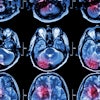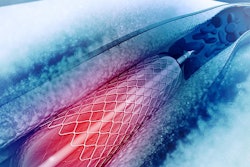
To win the hearts and minds of trainees and reassure them about the impact of artificial intelligence (AI), radiologists must highlight patient interaction and how they contribute to clinical management, delegates heard at the annual leadership meeting of the European Society of Radiology (ESR), recently streamed live from Berlin.
With radiologist numbers dwindling but the demand for imaging growing, recruiting the best trainees and also those who stand the greatest likelihood of achieving job satisfaction is vital, noted experts at a special session about the future of radiology.
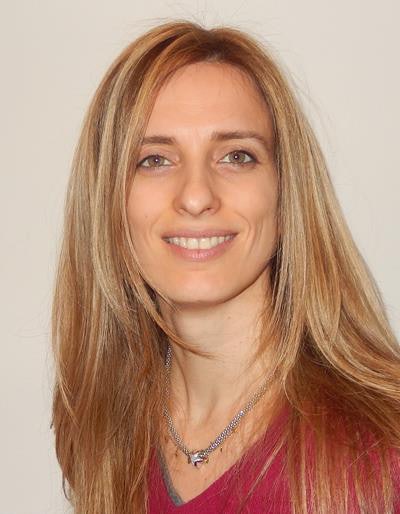 Dr. Giulia Zamboni from Verona, Italy.
Dr. Giulia Zamboni from Verona, Italy."Medical schools need to place radiology at the core of the curriculum and make radiology rotations obligatory, not elective. If you don't know a specialty, you are not likely to choose to enter into it," said Dr. Giulia Zamboni, a radiologist at GB Rossi University Hospital in Verona, Italy. "We must not forget that students go to medical school because they want to become doctors. When considering radiology, the majority might fear the loss of patient contact."
Early contact between medical students and radiologists is important, specifically for developing subspecialty interests, but the focus must be on quality, not quantity, she added.
Key role of abdominal radiologists
Abdominal diseases are encountered in many rotations, such as internal medicine, surgery, and the emergency department, so an abdominal radiologist is often the first radiologist that trainees encounter, Zamboni explained. Abdominal radiologists, therefore, have a responsibility to make an effort to present their job well.
Abdominal imaging has easy-to-recognize anatomy and can be very rewarding for trainees, and the capacity to identify anatomy and simple pathologies early on may prove a factor that encourages them to pursue the subspecialty as a career. Trainees should be kept active while on rotation, and tasks such as reading basic exams and performing ultrasound on student volunteers or patients with simple questions, such as to rule out cholecystitis, will make them feel that they have a role, she said.
"We must make an effort, and when we meet medical students rotating in the clinical services or in the emergency department or at meetings, we have to show them we have a pivotal role as a clinical decision-maker. Moreover, we should expose students to interventions in radiology ... not only for diagnosis but for treatment," Zamboni noted.
She suggested granting trainees access to subspecialty meetings, and she thinks it would be helpful to involve them in body imaging research and encourage them to participate in other residents' projects, which may lead them to submit abstracts to conferences and attending meetings in person.
AI and the fear factor
According to Dr. Markus Lerchbaumer, a radiologist at Charité University Medicine Berlin, attracting students to radiology is straightforward: It pivots on providing structured education with fixed rotations, a sufficient amount of teaching, additional research projects aimed at high-quality journals, and, importantly, an adequate work-life balance.
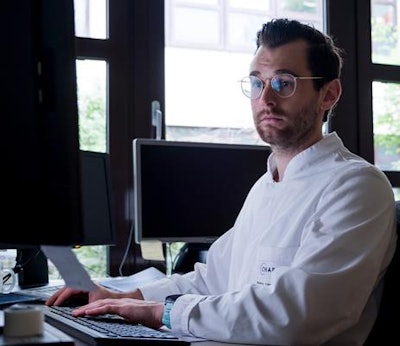 Dr. Markus Lerchbaumer from Berlin.
Dr. Markus Lerchbaumer from Berlin.While the strategy is simple in theory, implementation is more problematic, and he pointed to a changing university environment in which the ideal triangular balance of clinical work, research, and private life is increasingly perturbed.
"Work-life balance is important for the next generation, and many opt for radiology on this basis, because imaging seems to offer them an interdisciplinary approach, access to a broad spectrum of patient cases, and the capacity to choose our patient content and, therefore, workload -- diagnostic only or also interventional," Lerchbaumer told ESR delegates.
Pitched against this was the perception of the encroaching role of artificial intelligence, and while residents already understand the potential of the technology, AI is still creating anxiety among undergraduates, he explained. Students question why they should enter a profession when they may be replaced by a robot in 10 years, he continued. The only answer is to help them understand that although AI will be superior to human intelligence in the future, it will remain a tool that will also allow humans to boost their own capacities.
German-led schemes
To support students and residents, two forums, both created in the past year or so, now exist in Germany. Created in early 2018, the Young Radiology Forum focuses on medical education and specifically aims to structure and complement the curriculum with coordinated training courses.
The other group, Young Radiologists Europe, was formed at the end of 2017 in Berlin, Munich, and Mainz. It aims to facilitate an international or Europe-wide network to enable exchange between residents and senior clinicians; support education and provide motivated students with funding to attend congresses; create extracurricular, hands-on training for small groups; and promote research so that residents can find project partners, talk about ideas, and discuss the current literature. Supported by the ESR, the group received 20 scholarships for ECR 2018 attendance, and this year it also held its first two-day summer school, Hands-on Radiology, in Berlin for more than 30 students.
Lerchbaumer also referred to the link between investment in good research education and its effect on tomorrow's clinical practice.
"We need experienced researchers to teach us, research groups to provide structure to our line of research, and collaborative research centers to maintain quality," he said. "These impact young investigators and also their clinical work. All that you are teaching us is an investment. ... You are the current leaders of Europe, and some of us will be the leaders in the future. So let's not call it the young generation, let's call it the next generation."
ESR lends support
Presenting the ESR's thinking on how to attract young blood to radiology was Dr. Carlo Catalano, chair of the ESR Education Committee and professor of radiology at La Sapienza University of Rome Hospital in Italy.
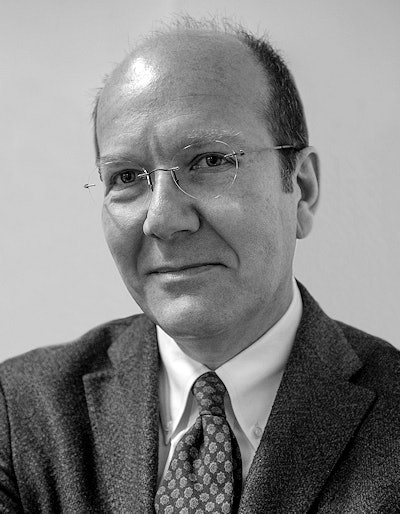 Dr. Carlo Catalano from Rome.
Dr. Carlo Catalano from Rome.He admitted AI and a perceived lack of patient contact have discouraged medical students from pursuing imaging as a career, but several simple yet important gestures may prove to be game changers. Ensuring that students understand radiology makes a difference in a multidisciplinary team and is crucial to clinical decision-making for therapy and treatment. Like Zamboni, he advocated showing students early on how the interventional radiologist can perform image-guided therapy and how image-guided monitoring has an early effect on changing or maintaining treatment strategies.
The ESR Undergraduate Education Subcommittee is promoting and explaining the role of the radiologist to medical students using different tools, such as an e-learning platform with classified content aimed at either teachers or undergraduates. He also pointed to ESR's Invest in Youth program, which has involved 8,000 participants over 16 years, and the ECR's Coffee and Talk sessions, which provide informal but important opportunities whereby medical students and residents can meet, exchange, and network with experienced radiologists.
Research has shown that, while one of the most technologically forward-moving specialties, radiology has experienced a drop-off in interest due to a perceived lack of job opportunities and beliefs that it did not provide enough patient contact, Catalano explained. In addition, students cite the increased use of computer technology as a reason not to choose radiology.
Other factors influencing the choice of radiology as a career are the chance to practice interpretation in the reading room, the influence of a radiologist as a mentor, the enjoyment of the practical aspects of imaging, and the desire to do more interventional radiology. Lack of patient contact often is the biggest dissuading factor.
"According to a recent survey in 2018, factors that attracted students to radiology were intellectual stimulation and access to emergent technologies," Catalano said.
In this survey, 38% chose radiology primarily for intellectual reasons, such as opportunities for research and study involvement; 20% for imaging aspects; and 20% for procedural aspects.
"Some students chose radiology primarily because they wanted a nice life -- they were among those who were most disappointed with their choice of career," Catalano noted. "The radiological community has to engage with medical students as early as possible and throughout their entire curriculum and recruit only the students with the greatest likelihood of achieving job satisfaction."


